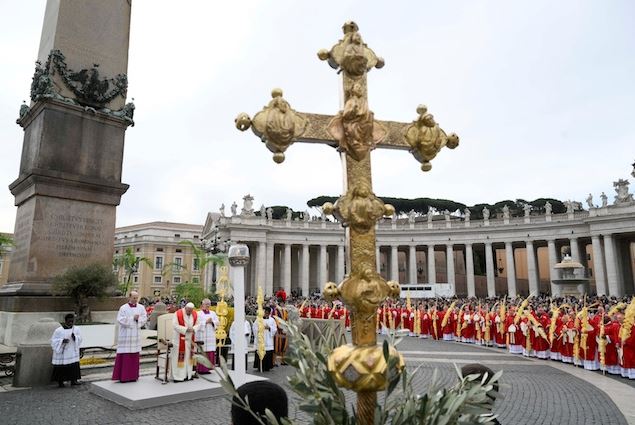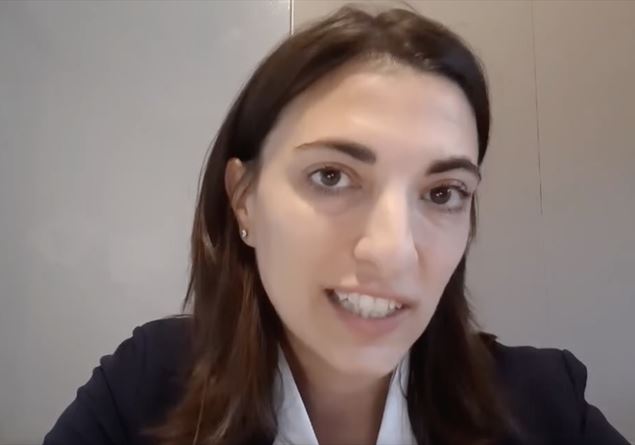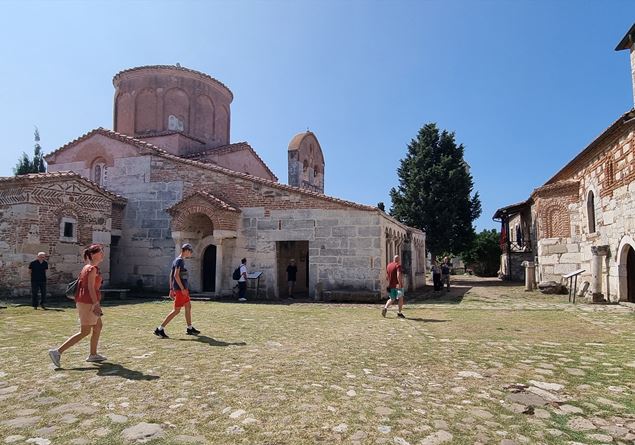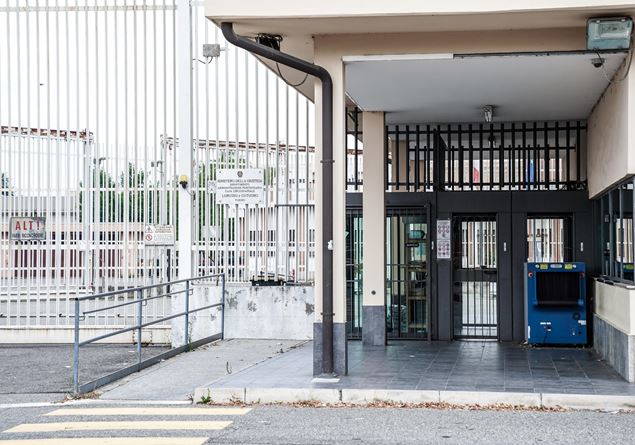With the Palm Sundaywith which you remember the triumphant entry of Jesus to Jerusalem to meet death, begins the Holy Week During which the last days of Christ’s earthly life are recalled and his passion, death and resurrection are celebrated.
The story of the entrance of Christ in Jerusalem is present in all four gospels, but with some variants: those of Matteo and Marco They say that people waved branches of trees, or fronds taken from the fields, Luca It does not mention it while alone John It speaks of palm trees (Mt 21,1-9; Mk 11,1-10; Lk 19.30-38; Jn 12:12-16).
The episode refers to the celebration of the Jewish holiday of Sukkotthe “feast of the huts”, on the occasion of which the faithful came en masse on pilgrimage to Jerusalem and went up to the temple in procession. Each carried in his hand and waved the lulava small bunch consisting of the branches of three trees, palmsymbol of faith, myrtlesymbol of the prayer that rises towards the sky, and the willowwhose shape of the leaves referred to the closed mouth of the faithful, in silence before God, tied together with a wire of grass (lv. 23.40). Often attached to the center there was also a kind of cedar, theEtrog
(The good fruit that United Israel represented for the world).
The path was rhythmic by the invocations of salvation (Osanna, in Hoshana Hebrew) in what in time that has become A choral celebration of liberation from Egypt: After the passage of the Red Sea, the people had lived under the curtains, in the huts for forty years; According to tradition, the expected messiah would have manifested itself during this party.
Giotto, entrance of Jesus to Jerusalem, Chapel of the Scrovegni, Padua
The choice of the donkey instead of the horse
Jesus, therefore, enters Jerusalem, the seat of Palestine’s civil and religious power, acclaimed as it was done only with the kings, however, to ride of a donkey, as a sign of humility and mildness. The cavalcure of the kings, usually warriors, was in fact the horse.
The Gospels narrate that Jesus arrived with the disciples a Bethagenear Jerusalem (it was Saturday evening), sent two of them in the village to take a donkey tied with a foal and lead them to him; If someone had objected, they should have said that the Lord needed it, but they would have been postponed immediately. The Gospel of Matteo says (21, 1-11) that this happened so that what had been announced by the prophet Zaccaria (9, 9) was fulfilled “Tell Sion’s daughter; Here is your king comes to you mild, sitting on a donkey, with a foal son of the beast of soma».
The disciples made what was requested and led the two animals, the morning afterwards they covered them with cloaks and Jesus took the seats there by going to Jerusalem.
Here the very large crowd, gathered by the voices of the arrival of the Messiah, spread the cloaks on the ground, while others cut branches from the olive and palm trees, abundant in the region, and shaking them festively honoring Jesus exclaiming “Osanna to Davide’s son! Benedict the one who comes in the name of the Lord! Osanna in the top of the skies!».
The liturgy with the reading of the passion
The liturgy of Palm Sunday takes place starting from a place suitable outside the church; The faithful gather and the priest blesses the olive or palm branches, which after reading an evangelical song, are distributed to the faithful, then the procession is started inside the church. Here arrived the celebration of the mass continues, which stands out for The long reading of the Passion of Jesustaken from the Gospels of Marco, Luca, Matteo, according to the cyclical liturgical calendar; The text of the passion is not the same that we read in the celebration of the Good Fridaywhich is the text of the Gospel of San Giovanni.
The story of the passion is read alternately by three readers representing: the chronicler, the characters of the story and Christ himself. It is divided into four parts: the arrest of Jesus; the Jewish process; the Roman process; The condemnation, the execution, death and burial.
At the end of the mass, the faithful bring home the twigs of blessed olive tree, preserved as a symbol of peace, exchanging part with relatives and friends. It is used in many regions, that the head of the family uses a sprig, dipped in the blessed water during the Easter wake, to bless the table set on Easter day.
The date is mobile and linked to Easter
Palm Sunday is celebrated by Catholics, Orthodox and Protestants, and falls during Lent, which ends on Holy Thursday, the first day of the so -called “Easter Triduum”.
This party does not always fall on the same day because it is directly linked to Easter, whose date changes every year. The party is mobile and is set based on the first full moon following the spring equinox on March 21st. The Easter date for Catholics therefore oscillates between March 22 and April 25. If, for example, the full moon occurs on a Saturday 21 March, Easter falls on March 22, or the Sunday immediately following the equinox.
For the Orthodox, the date oscillates between April 4 and May 8 because they use the Julian calendar and not the Gregorian one such as Protestants and Catholics.

The Palm Sunday procession in the Basilica of the Holy Sepulcher of Jerusalem (Ansa)










